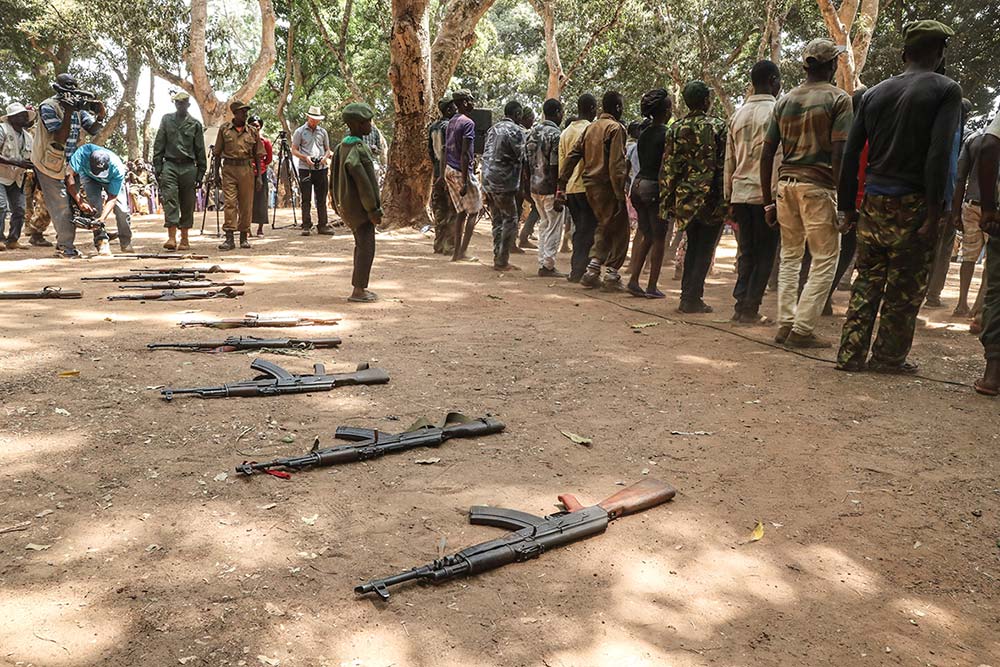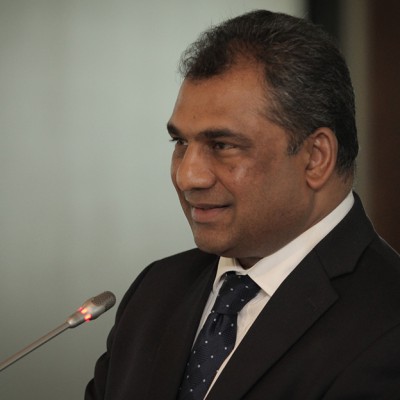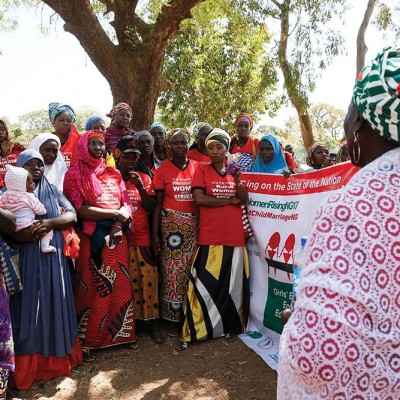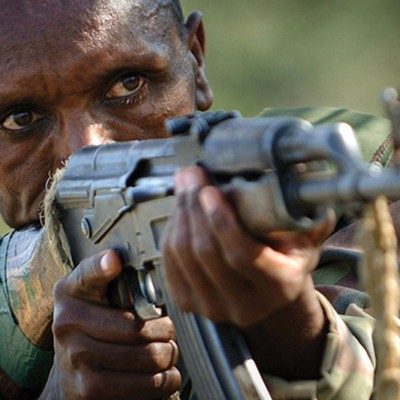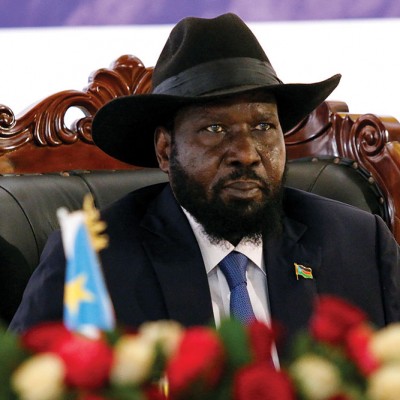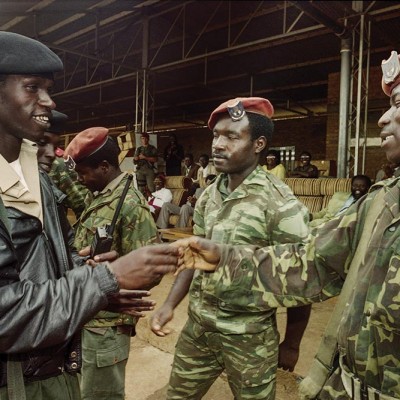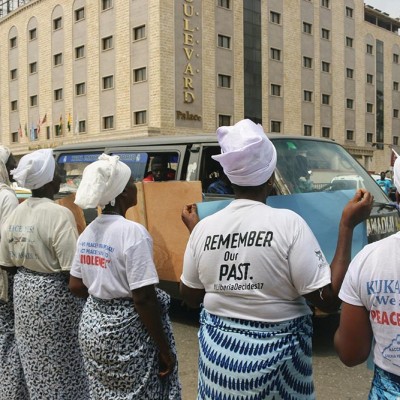[P]icking up the pieces of broken children after a conflict is hugely difficult, the necessary and ongoing effort is hard to sustain, and success is unpredictable to gauge.1
In most instances, post-conflict disarmament, demobilisation and reintegration (DDR) programmes do not sufficiently address the hardships of child soldiers. To achieve successful reintegration, former child soldiers require more than the usual DDR programme – they are in desperate need of community-based and community-governed initiatives. As such, it may be essential to redefine the third step of DDR as an “integration” rather than “reintegration”.
DDR programmes are coordinated and conducted by United Nations (UN) agencies or non-governmental organisations (NGOs) working together with national governments and local communities. In practice, it is challenging to navigate large numbers of ex-combatants in a chaotic post-war society. This is why DDR programmes have been significantly criticised for being uncoordinated and lacking impact on the lives of former child soldiers: “Overall, […] DDR efforts are inadequate, and many children have failed to receive the assistance needed to successfully return to their families and communities.”2 To investigate such criticism, the individual stages of DDR have to be assessed.
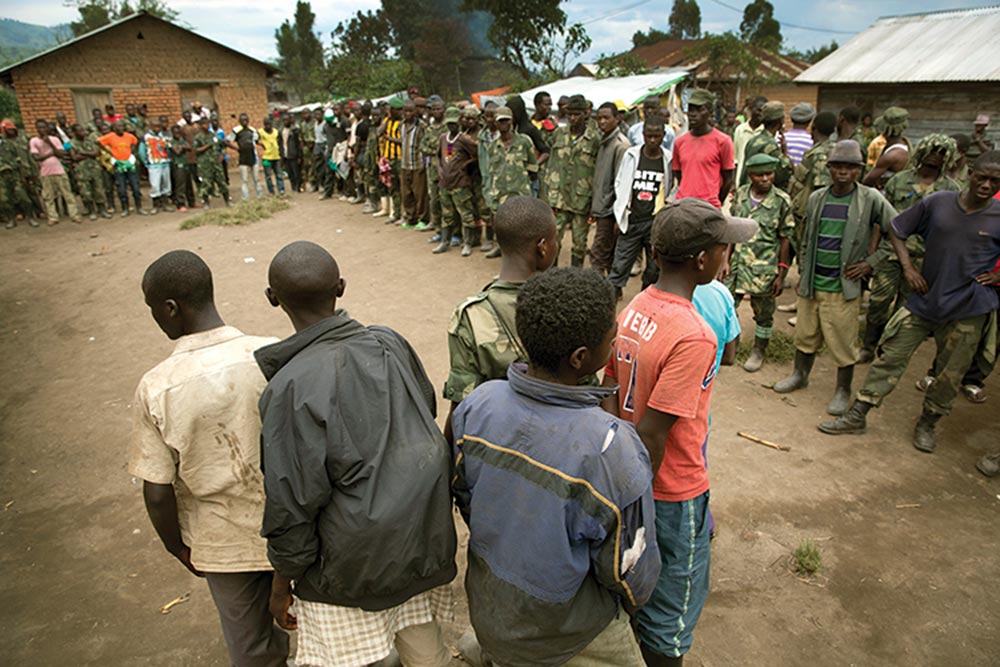
Disarmament, Demobilisation and Reintegration
Disarmament, the first part of the programme, involves weapon “collection, disposal, or destruction”.3 This step can already have significant difficulties – such as former soldiers possessing more than one weapon, or having no weapon at all. Reportedly, in Liberia, the effort was organised as a “one man, one gun” programme, which “worked against the best interests of children, especially girls, because rebel commanders confiscated children’s weapons prior to their release”.4 There are alternative initiatives such as “gun buy-back” or “food for guns” programmes5 that encourage former combatants to turn in their weapons. However, those initiatives offering monetary rewards appear to have limited effectiveness as they leave children vulnerable to adult exploitation – adult commanders can easily take advantage by sending children with their guns to DDR initiatives, only to strip them of the DDR money later on.6 In addition, “[i]n the countries in which these schemes have been tried, it has been learned that they can only operate for a limited period, in order not to generate a trade of arms in the country.”7
More creative disarmament methods have proved useful in targeting children, in particular, such as “bikes for guns” or “goats for guns”.8 However, these ideas will only remain effective in the long run if they are part of a larger integrative programme that involves the destruction of collected small arms, to prevent them from falling back into the hands of fighting forces or ending up on the black market.
Demobilisation, the second step, describes the formal process of separating or releasing soldiers from the armed forces or groups. This is especially complicated when it targets children, due to the fact that “[i]ronically, departure from an armed group can be very stressful because of the loss of valuable psychological support”.9 Another issue undermining demobilisation efforts revolves around the so-called security dilemma.10 The lack of mutual trust and fear of being attacked might cause parties to refuse the demobilisation of their troops. Thus, demobilisation requires a credible and strong authority – often a third party – to make warring factions demobilise and discharge their fighters.11 Often, the process of demobilisation also involves so-called interim care centres (ICCs), where former child soldiers remain for a certain period of time before they are reunited with their family or community. These care centres are transitional places where children stay for limited periods of time – up to several months – and receive healthcare, food and psychosocial support. In Sierra Leone, for example, “children under 15 were sent to Interim Care Centres (ICCs) under the care of UNICEF and child protection agencies, after which they were reunited with their families or went to foster families, and entered education projects.”12 Based on the fact that it is important to cut children’s ties with recruiters and, as a result, minimise the risk of re-recruitment, demobilisation remains a necessary process that has to be executed by all means.
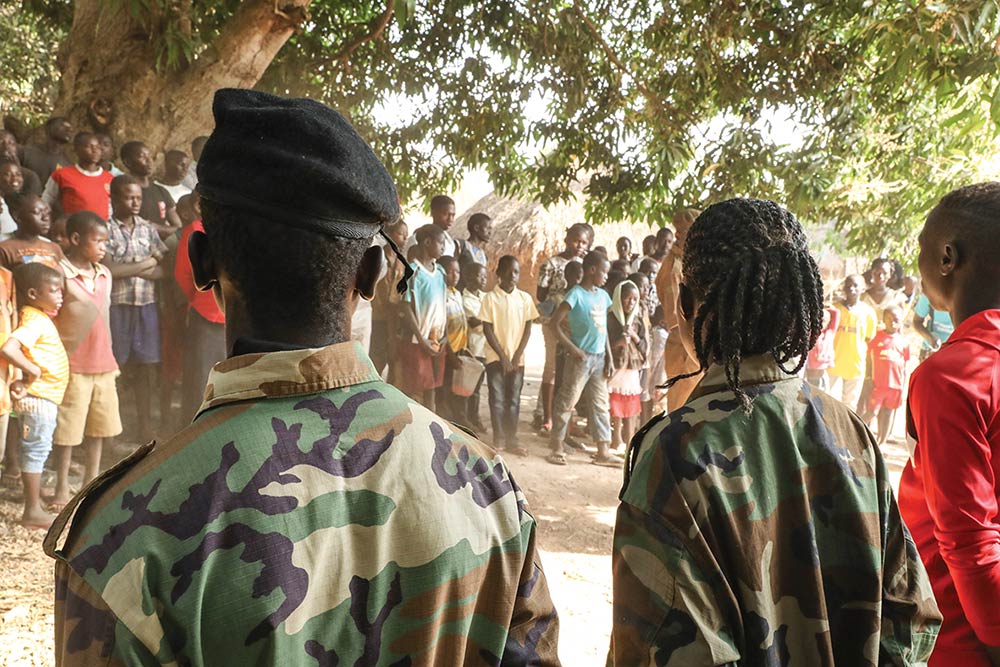
Reintegration is commonly regarded as the most complicated and complex part of the DDR process. For it to be successful, the previous two steps (disarmament and demobilisation) have to be characterised by a stable design and thorough implementation.13 Unlike disarmament and demobilisation, reintegration is a long-term process that could take years to achieve measurable results. It can be defined as “a reciprocal process that includes not only the adaption of former soldiers but also the rebuilding of healthy families and communities, without which former soldiers have few positive roles and options”.14 When involving reconciliation between perpetrators and victims who will have to learn how to co-exist in the same neighbourhood, reintegration can become particularly challenging.
DDR: Main Issues
It is precisely the duration of this last DDR step – reintegration – that is significant. Few international institutions can afford to govern the different reintegration phases of former child soldiers for several years. According to Wessels, reintegration includes five key elements that have to be completed:
- family tracing and reunification support;
- participation in educational opportunities;
- psychosocial therapy;
- providing education, but also training in “vocational and life skills that enable youths to obtain and hold jobs and also small loans that help them to earn an income”;15 and
- community mobilisation and sensitisation.
Regarding the complexity of any post-conflict landscape, most DDR programmes will encounter significant difficulties, which can be grouped into three main categories: programme length, age and gender, and economic environment and effectiveness.
First, reintegration processes require years – meaning that long-term funding is essential. Severe gaps in funding for the reintegration phase arise because “[f]unding for national DDR programs has typically been provided for immediate post-conflict demobilization and short-term reintegration support, normally for a one-year period”.16
Second, DDR programmes were originally designed to target adults, which is why children were often left out of the entire process and simply assumed to be taken care of by their families. Even today, with more child-sensitive campaigns, the programmes fail to account for children’s gender-specific needs. In Sierra Leone, although 30% of former child soldiers were estimated to be girls, only 8% (513 girls) of former child combatants in the actual DDR programme were female.17 Hence, scholars and practitioners such as Roméo Dallaire have proposed not to have one DDR programme including all former child fighters, but rather two separate programmes. In this way, the children’s gender-specific needs would be taken into consideration and served in a more direct way.18
Third, the local environment that the children return to may hold severe existential challenges. Although well intended, DDR programmes have reportedly failed to take the children’s economic environment into account, and hence have not provided desperately needed reintegration training for both the former child soldiers and the local communities.19 The reintegration phase of the United Nations’ (UN) 2002 DDR programme in Sierra Leone serves as a reminder of the children’s gruesome reality. At the macro level, the Sierra Leone DDR programme was celebrated as a huge success: “A total of 72,490 combatants were disarmed, 71,043 demobilised, and 63,545 former combatants participated in the reintegration segment, including 6,845 child soldiers.”20 The micro-level analysis, however, tells a different tale: despite the fact that the initial participation rates in the nationwide DDR programme were high, former child soldiers lacked community acceptance and support, and soon found themselves navigating an unstable economic environment. Following the programme, “[e]vidence […] surfaced that between two thousand and three thousand former child soldiers were subsequently engaged in heavy labor under harsh conditions in diamond mines”.21 To improve the reintegration process at the micro level, its multilayered nature has to be deconstructed and investigated in more depth.
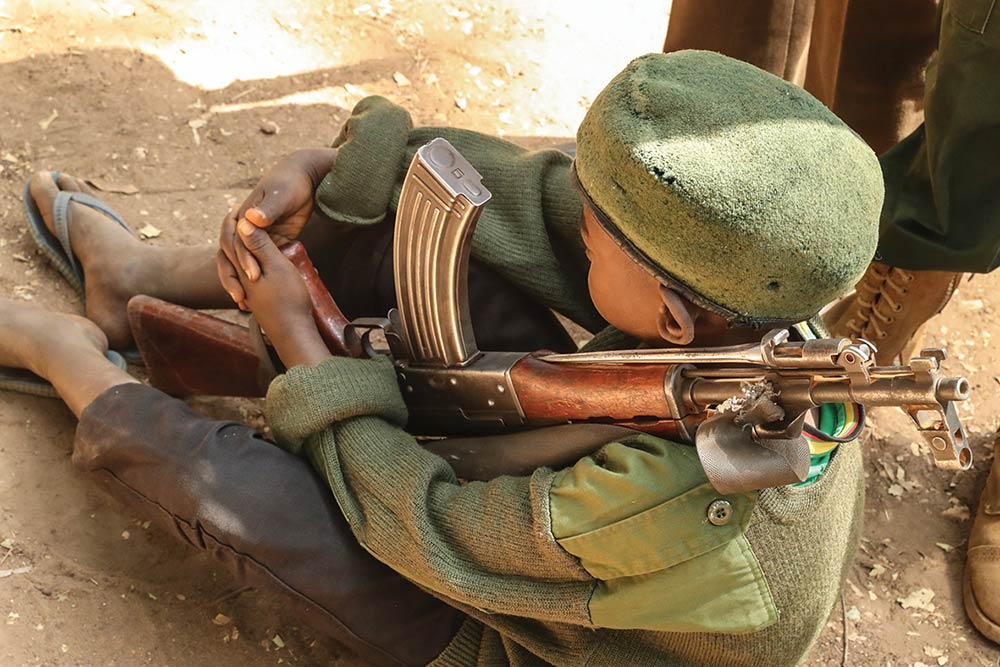
Reintegration: Challenges and Possible Improvements
The critical challenge of the moment is to bridge the gap between existing standards and the catastrophic situation of children on the ground.22
Reintegration often appears to be successful at the macro level, as it is measured in the numbers of former combatants who have or have not been re-recruited. This success story does not necessarily transpire to the micro level – on the contrary, the challenges former child combatants face when trying to adjust to civilian life can be substantial. Among other things, they include individual issues such as identity crises and trauma, as well as collective challenges such as community involvement and emergency education.
Identity Crises
After staying with armed forces or groups for a certain amount of time, child soldiers may escape, be released or be formally discharged. Depending on the duration of their group membership, each child will face different struggles when reintegrating into society.
Many are confronted with the issue of having undergone intensive indoctrination processes during their time with the fighting forces. Even though pecuniary rewards might be a powerful method to make children stay,23 indoctrination rituals and in-group socialisation play a more crucial role in turning children into soldiers. While some former child combatants reintegrate easily, others have acquired the identity of a fully-fledged group member through systematic manipulation, drugs, comradeship, repeated exposure to violence and committing atrocities themselves. Some armed groups that cannot provide pecuniary rewards rely almost completely on their socialisation processes. Socialisation, in this instance, can be defined as:
[…] processes whereby naïve individuals are taught the skills, behaviour patterns, values and motivations needed for competent functioning in the culture in which the child is growing up. Paramount among these are the social skills, social understandings, and emotional maturity needed […] to fit in with the functioning of social dyads and larger groups.24
The Lord’s Resistance Army (LRA) in Uganda, for instance, is known for relying heavily on indoctrination. Formal socialisation is accomplished by a so-called “bootcamp” involving military training, whereas the informal part comprises a “welcome ceremony” and registering the newly arrived children.25 When entering the LRA, the children have to take part in the “shea-nut butter ritual”, after which they will be reborn as soldiers, leaving their old identities behind. During this ritual, “[t]he butter is smeared on the body of the abductees to protect them from bullets.”26 Commanders and peers frequently become the child soldiers’ substitute family, providing protection and guidance.
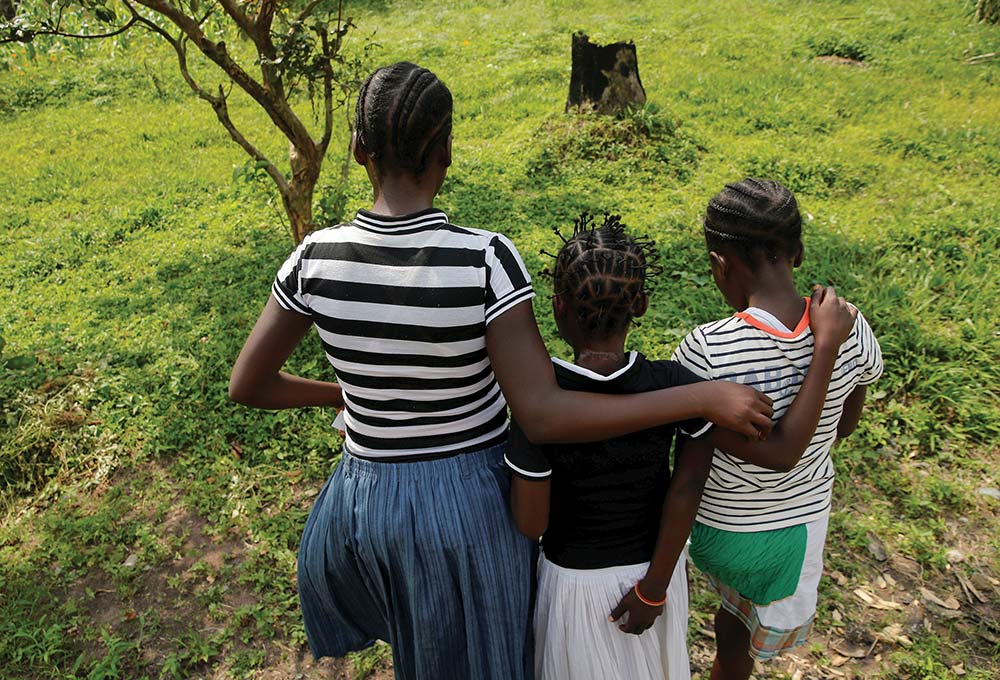
There is no shortage of examples illustrating the difficulties of child soldier reintegration. Anna, a 17-year-old girl who had been fighting with the LRA, “did not understand the way of life in her village and according to which standards people behaved towards each other.”27 Anna’s explanation demonstrates why third-party mediation and reintegration support should be sustained over longer periods of time:
It was very difficult. I was not used to them and I did not like it in the village. People looked at me and they did not want to talk with me. […] I wanted to go back to the bush, back to my friends and fight. One day my father was angry at me because I wanted to go back. He did not understand being a rebel is good. My mother took me into the hut and we started cooking. She asked me to go out and get some cassava from the field. She gave me a panga [machete]. When I came out of the house my father was sitting there. He made me so angry. I took the panga and cut his head. He fell on the ground and I finished him. People were screaming and crying. My mother cried and yelled to me. I did not understand why all these people screamed so much, this is what we do in the bush. He was not a good man and I am a good rebel.28
To improve ex-child soldiers’ functionality and well-being in civil life and overcome stigmatisation by local communities, re-identification with a non-violent lifestyle has to be accomplished. Due to in-group socialisation and the time periods some children spend with armed forces and groups, scholars argue in favour of using the term “integration” instead of “reintegration”.29 Broadly speaking, “reintegration is less about reinserting former soldiers back into communities or jobs than about helping children become functional in their society – helping them find meaningful and respected social roles and create civilian identities.”30 Even though this is undoubtedly a complex undertaking, it may be possible to achieve through community involvement, sensitisation and reconciliation. Despite inherent shortcomings, pioneering programmes such as the 1992 Return to Happiness programme or the Community Development Committees (CDCs) in Sierra Leone attempted to achieve just that.
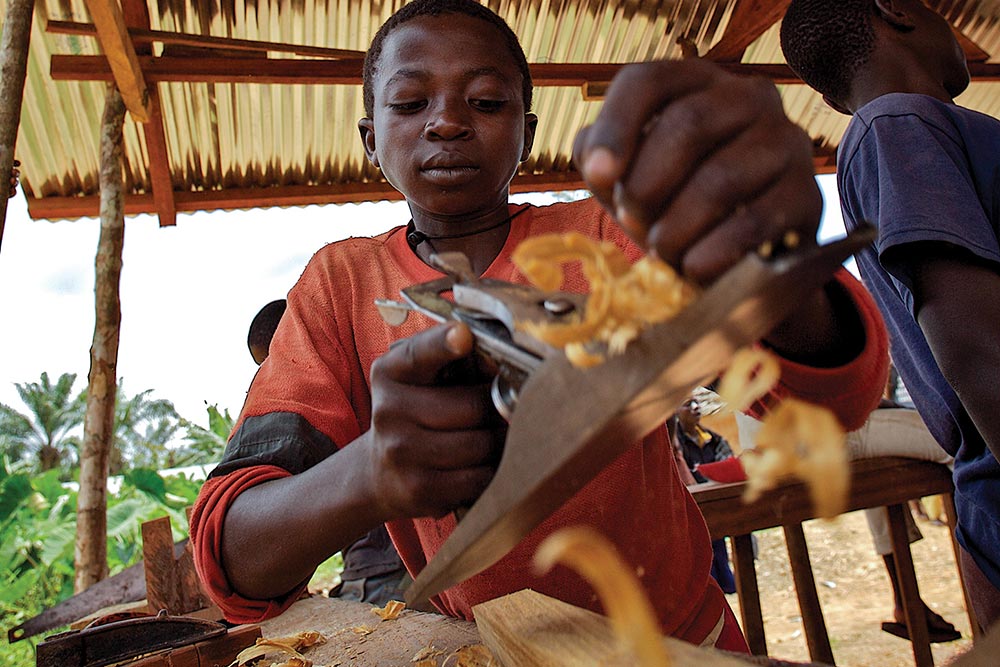
Community Involvement
One of the crucial parts of reintegration is reconciliation with families and communities. As defined by Wessels, reconciliation means “the rebuilding of positive relationships following destructive conflict”,31 and to restore such positive relationships, local healing methods and rituals have to be supported.
In Sierra Leone, the Truth and Reconciliation Commission was established in 2002 to deal with people’s grief, to implement transitional justice and to listen to the children who had been abducted by and fought with the different armed forces and groups. Nevertheless, even though the “dual identities of children as victims and perpetrators”32 were acknowledged by the commission, the former child combatants – and, in particular, girls – still had to face severe stigmatisation by communities. Since child soldiers are mostly “recruited from settings with preexisting fragile institutional realities”,33 it is the reintegration environment that remains crucial.
Restorative justice models appear to be the most applicable to the context of former child soldiers and their reintegration into communities and families – for community members to feel comfortable around former fighters, it is beneficial if the children contribute to the improvement of the whole community. This can be accomplished by the community and the children developing mutual goals and working towards their achievement. Examples for community mobilisation are the United Nations Children’s Fund (UNICEF)-led Return to Happiness programmes in Mozambique,34 and another participative strategy applied in Sierra Leone.35 Both examples aim to rebuild the trust between former child soldiers and their communities.
The 1992 Return to Happiness programme “was designed to provide urgent mass psychosocial support to children affected by violence […] [and] encourage […] families and communities to actively participate in the recovery process”.36 The programme’s key ingredient relied on adolescent volunteers to be trained as “play therapists”, who then learnt how to increase the trust of children by using “games, art, puppetry, song, and storytelling”.37 By not following the Western trauma therapy approach, this model supports a community-based strategy as well as the mutual goal to improve relationships between children, adolescents and teachers.
The strategy used by the Christian Children’s Fund (CCF) in northern Sierra Leone aimed at “building positive relations through cooperative activities in twenty-six communities”.38 Pre-existing committees, called Kankalay Committees or “togetherness groups”, were re-established or newly formed. Calling themselves CDCs, these groups “served as catalysts for collective planning and action”39 and enabled people to gather and talk about their experiences during war. In addition to improving communication and a sense of belonging, the committees and communities also planned projects – such as building a school or improving healthcare by constructing a health post. The fact that former child soldiers were involved in most of the construction and building processes made reintegration easier: villagers learnt to see them as a valuable part of the community. In addition, conflict resolution committees, facilitated by the CCF, were established to reduce social tensions and avoid harassment throughout the working process. Temporary payment for the workers helped former child combatants reduce the stigmatisation caused by their poverty and achieve the status of diligent workers.
The achievement of mutual goals led to the disruption of “us versus them” thinking, as well as to community sensitisation and the rearrangement of social structures. Wessels calls it the “power of cooperation”, through which the striving for achievement of shared goals can mobilise a whole community, and serve the purposes of reconciliation, reintegration and restorative justice at the same time.
Conclusion
Dealing with the reintegration of former child combatants is a highly complex process that requires long-term funding and assistance. Although formal DDR programmes remain absolutely necessary, it is the third step – reintegration – that should be emphasised. The only possibility of achieving successful micro-level reintegration in an unstable and impoverished post-conflict society is to combine all the different variables in one thorough programme. While trauma healing and educational, vocational and business training are vital ingredients for success, it is community mobilisation that plays the most important role in the reintegration process.
Reintegration efforts should not predominantly rely on third-party intervention but should also help to further develop already-given resources, such as the involvement and sensitisation of local communities. This has to involve improving local infrastructures, providing minority-sensitive and gender-sensitive programmes, mobilising communities and supporting local spiritual healing rituals. International agencies have to prioritise support and mediation over short-term solutions that impose Western values and belief systems. For DDR programmes to accomplish success at the micro level, it may be necessary to define the third stage as a post-conflict “integration” rather than “reintegration” process.
Endnotes
- Dallaire, Roméo (2011) They Fight like Soldiers, They Die like Children. London: Arrow Books, p. 152.
- Coalition to Stop the Use of Child Soldiers (2008) Child Soldiers: Global Report 2008. London: Coalition to Stop the Use of Child Soldiers, p. 27.
- Drumbl, Mark A. (2012) Reimagining Child Soldiers. Oxford: Oxford University Press, p. 168.
- Machel, Graça (2011) The Impact of War on Children. London: C. Hurst & Co., p. 16.
- cf. Kingma, Kees (1997) Demobilization of Combatants after Civil Wars in Africa and Their Reintegration into Civilian Life. Policy Sciences, 30, p. 157.
- cf. Dallaire, Romeo (2011) op. cit., p. 161.
- Kingma, Kees (1997) op. cit., p. 157.
- cf. Dallaire, Romeo (2011) op. cit., p. 161.
- Wessels, Michael (2006) Child Soldiers: From Violence to Protection. London: Harvard University Press, p. 140.
- cf. Humphreys, Macartan and Weinstein, Jeremy M. (2007) Demobilization and Reintegration. The Journal of Conflict Resolution, 51(4), p. 535.
- cf. Kingma, Kees (1997) op. cit., p. 159.
- Coalition to Stop the Use of Child Soldiers (2008) op. cit., p. 298.
- cf. Awodala, Bosede (2009) Comparative International Experience with Reintegration Programmes for Child Soldiers: The Liberian Experience. Peace and Conflict Review, 4(1), p. 1.
- Wessels, Michael (2006) op. cit., p. 160.
- Ibid., p. 163.
- Coalition to Stop the Use of Child Soldiers (2008) op. cit., p. 31.
- cf. Ibid., p. 298.
- cf. Dallaire, Romeo (2011) op. cit., p. 178.
- cf. Özerdem, Alpaslan and Podder, Sukanya (2011) Child Soldiers: From Recruitment to Reintegration. New York: Palgrave MacMillan, pp. 8–9.
- Solomon, Christiana and Ginifer, Jeremy (2008) Disarmament, Demobilisation and Reintegration in Sierra Leone Case. Centre for International Cooperation and Security, University of Bradford, p. 2.
- Özerdem, Alpaslan and Podder, Sukanya (2011) op. cit., p. 167.
- Chikuhwa, Tonderai W. (2010) The Evolution of the United Nations’ Protection Agenda for Children. In Gates, Scott and Reich, Simon (eds) Child Soldiers in the Age of Fractured States. Pittsburgh: University of Pittsburgh Press, p. 37.
- cf. Dudenhoefer, Anne-Lynn (2016) Understanding the Recruitment of Child Soldiers, Conflict Trends, 2016 (2), p. 49.
- Grusec, Joan E. and Hastings, Paul D. (2007) Handbook of Socialisation; Theory and Research. New York: Guilford Press, p. 13.
- cf. Vermeij, Lotte (2011) Socialization and Reintegration Challenges: A Case Study of the Lord’s Resistance Army. In Özerdem, Alpaslan and Podder, Sukanya (eds) op. cit.
- Ibid., pp. 176–177.
- Ibid., p. 183.
- Ibid., p. 183.
- cf. Ibid., p. 182.
- Wessels, Michael (2006) op. cit., p. 182.
- Ibid., pp. 209–210.
- Coalition to Stop the Use of Child Soldiers (2008) op. cit., p. 299.
- Vargas-Barón, Emily (2010) National Politics to Prevent the Recruitment of Child Soldiers. In Gates, Scott and Reich, Simon (eds) op. cit., p. 205.
- cf. McClure, Maureen W. and Retamal, Gonzalo (2010) Wise Investments in Future Neighbors: Recruitment Deterrence, Human Agency, and Education. In Gates, Scott and Reich, Simon (eds) op. cit., p. 229.
- cf. Wessels, Michael (2006) op. cit., p. 210.
- McClure, Maureen W. and Retamal, Gonzalo (2010) op. cit., p. 236.
- Ibid., 236.
- Wessels, Michael (2006) op. cit., p. 210.
- Ibid., p. 211.

